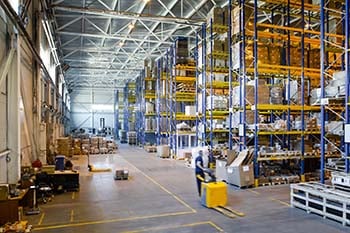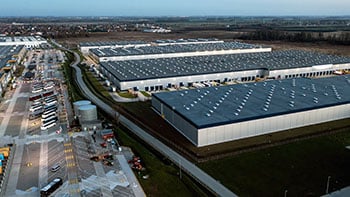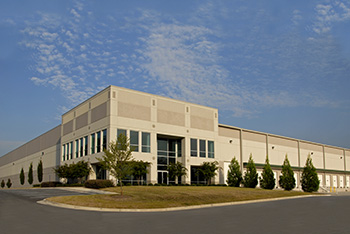Labor is typically one of the largest distribution expense items, along with freight costs, for most companies. According to Indeed.com, the job employment website, the average base pay for warehouse workers is $16.78 in the U.S. However, when you factor in benefits such as healthcare, training and more – the fully loaded cost balloons to $28.86 per hour. Companies typically have the following costs over and above the base pay:
- Benefits and healthcare: 35% of payroll costs
- Workers comp and unemployment: 8% of payroll costs
- Training: 4% of payroll costs
- Recruitment, hiring and HR: 25% of payroll costs
To offset these rising warehouse labor costs, companies must have an action plan to reduce expenses and not hurt company profits. FCBCO recommends the following proven ways to drive down costs through efficiencies as well as the use of various technologies.

1. Recruit and Retain Labor More Effectively
Companies must focus on how to recruit the best candidates, and to then retain those individuals. However, they must perform this process as efficiently as possible due to rising costs. In working with a wide variety of clients, F. Curtis Barry & Company has found the cost to recruit, train and retain an hourly employee can be as high as $3,000 to $10,000 once you factor in the HR costs, training costs etc. and how many employees you lose in order to find the one that is willing to perform the work long term.
Being able to effectively recruit, train and retain individuals is just as important as managing the existing workforce. Consider doing a brief introductory video reflecting the “day in the life of a warehouse worker” for your facility. Use it as a way to eliminate those individuals who don’t understand the manual requirements of the job, and to save yourself further time investment into someone that most likely wont pan out and be successful. In addition, having them talk to an employee currently performing the job might provide an insight into what the job is really like.
One key is to identify the characteristics of a successful employee and look for those attributes in the prospective new hire. Many pre-employment testing programs identify these successful characteristics and test for them in those potential employees being interviewed. It requires some input by management to identify expectations and goals to be used to gauge high performance employees, but this should be in place anyway. If you cannot tell your employees what it takes to succeed, how can you expect to find employees who will be successful?
2. Train More Effectively
It never ceases to amaze us when we see warehouses spend significant time and money recruiting and hiring employees only to "throw them to the wolves" with inadequate training, and then wonder why the turnover rate is so high. There is no single answer as to how much training time should be allocated to new hires.
It varies with the position being filled and the complexity of the job. Even the simplest of jobs require some level of training. The initial training period is the most important in determining if the new hire will succeed at their job. Learning about the specific job is important, but also learning about the company and the work culture is critical to long term employment. Using a seasoned employee as a “Buddy” can help explain to the new employee what is really required.
During the training period, it is important to quantify the expected output and results for the job. The old adage that "we measure what we value" goes a long way to defining the real work culture. The training period should be the opportunity for the new hire to learn what it takes to get ahead.
Many warehouses have not documented each job function to be used as a training aid. If you haven’t done this, you may be surprised at the side benefits gained by going through the exercise of documenting your warehouse processes. Developing training manuals or standard operating procedures can not only make the training time more effective but can also lead to process reviews and changes that can reduce overall warehouse costs.
3. Properly Position and Equip Supervisors and Management
Companies must be diligent in ensuring that management and supervisors are “on the floor” balancing the workloads and monitoring performance and throughput throughout the day. These individuals need real-time data to help understand when workers are not meeting the efficiency standards across various warehouse functions.
By ensuring that your leadership is engaged with, and having facetime with your employees, you can greatly increase the chances of labor retention and obtaining quicker and better levels of expected throughput and efficiency. As an employee, knowing that you have easy and quick access to leadership is beneficial, and can lead to more opportunities to fix an issue that may otherwise have led in their departure from your company.
Is your leadership team equipped with the right skills to manage and lead the workforce? Promoting from within is usually a great practice, however, refrain from having blinders in place to where you promote an employee to a leadership position that may be an exemplary employee - but lacks necessary leadership traits. Consider management training courses and other options available to you. Ensuring your management teams has the skills needed will ensure that your workforce is that much better positioned for success.
4. Give Feedback to Employees
Employees want to feel they are part of the bigger company picture and deserve accurate feedback about their production. One of our clients displays monthly graphs for the past year in their logistics management offices, showing actual against planned metrics such as total error rate, cost per order, etc. In their DC, current production is displayed on terminals and message boards, and they not only acknowledge department records for various departmental functions, but individual record holders for such activities as picking or packing. Providing targets works to raise warehouse productivity.
This type of feedback is invaluable in helping employees determine how they are doing. Most people want to do a good job and only ask that they receive feedback as to how they are performing. It is also human nature to want to meet or exceed expectations. As such, we have seen warehouses increase overall productivity by 10% by simply posting results and providing meaningful feedback to their employees.
Posting results at the company, warehouse, function, or individual level can be based on whether the required information is readily available and credible. Match the level of measurement to your ability to report accurate and timely information.
In addition to effectively cultivating and managing your labor force, its also important to implement best practices within the warehouse that will ensure you maximize the throughput of the employees you do have. These are great ways to support your staff in setting them up for success.
5. Improved Warehouse Slotting
Slotting is one of the most critical distribution fundamentals with significant ability to drive down costs. Most companies struggle to maintain proper warehouse slotting programs. It is not uncommon to see proper slotting disciplines decrease order cycle times by 20-30% over warehouses that are not slotted properly.
Companies should develop a heat-map to understand the density of picks by location and to understand the distance walked by pickers in a day’s time. A heat map visually shows through “hot” and “cold” colors, where picks are made throughout the facility. It is not uncommon for pickers to spend 70% of their time walking.
The heat-map will easily highlight the problems within your facility. From here, the slotting should focus on having the right quantity of inventory in a location; using the right size location for product velocity; and where that location should be. It is also critical to think about what products should be picked from “golden zone” locations.
These are the fastest and easiest picks to make where no bending or reaching is needed. Focus on the fastest moving (selling velocity) product first. This may be the 20% to 30% of SKUs that give you 80% or more of the units picked. Once the slotting is completed on “paper”, re-run the heatmap with the intended new locations to ensure that you have not created new points of congestion.
6. Evaluate Potential Changes to Picking
In addition to slotting, the most effective warehouse pick methodology can have a significant impact on your employee’s pick efficiencies. If you are discreet order picking (i.e., one order at a time), there are ample opportunities to increase throughput. The same is true for some companies using cart bin picking. Even with proper slotting, your overall pick footprint may be quite large.
One solution is to consider a zone batch pick. This keeps the pickers in a relatively small footprint - which may be just a few aisles - and they pick a portion of an overall batch. All the picks made from various zones are then sorted down to the order level either with a put wall or unit level sortation. This can dramatically increase the overall pick efficiency and throughput. Companies find it makes a significant difference when they may be struggling to process all the orders before the carrier cutoff time.
7. Invest in An Effective WMS System
Many companies believe that a WMS is just too expensive to consider, or are unsure of the benefits of a warehouse management system. There are great WMS options for whatever size company needing solid warehouse functionality. A WMS is the ultimate tool at your employee’s disposal. It can aid them in every function they may be needed to perform within the warehouse. These WMS solutions will give you:
- Functions to support more efficient picking methods,
- Task interleaving to use labor more efficiently while workers are doing putaway or replenishments,
- Directed putaway to eliminate workers trying to locate open locations,
- Suggested carton sizes so packers are not using excessively large boxes,
- Productivity reporting to know exactly how each employee is performing,
- Lot tracking and serialization capabilities,
- Tighter inventory management controls such as FIFO, FEFO and LIFO, as well as robust cycle counting options and audit trails
- Enhanced kitting and light assembly needs.
- Barcoding scanning and support of a wide range of barcode formats.
8. Automation, Technology and Robotics
Automation can be a great asset and tool to support your employees as well. Automation allows the workforce to be far more productive, and head off additional hiring that otherwise would have been needed.
Some of the biggest buckets of time can be automated, making employees more efficient. For example, in picking, travel is the biggest bucket of time. By incorporating conveyor into the equation, you can help eliminate some of the travel, allowing your employees to focus on picking product and not necessarily walking around. The conveyor solves the transportation aspect of the picked product. Robots can also aid employees in many job functions.
Whether goods to person technologies, automated print and apply on shipping lines, or conveyance or robotics - automation reduces warehouse labor costs effectively.
Summary
Hoping that minimum wages do not increase is not a strategy. Minimum wages will go up, but so are existing base rates for those workers earning more than $15 an hour in your operations. Rather than worrying about labor rates, focus on supporting your employees and ensuring you are getting the best from them. This starts at the very beginning before even hiring them.







SHARE